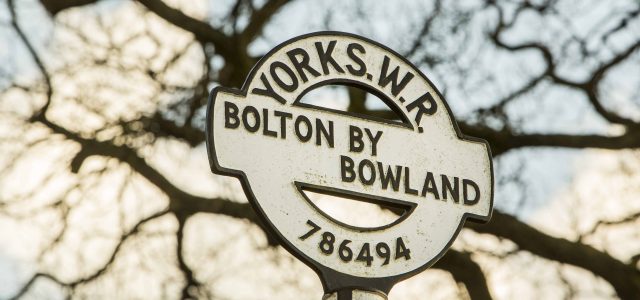
BOLTON-BY-BOWLAND
Visit the delightful village of Bolton-by-Bowland, one of the prettiest villages in this area
What a delight this village is, how unassuming and unspoilt! Bolton-by-Bowland, ‘the village by the land of cattle’, lies less than one mile north of the Ribble and less than two miles from the busy A59 at Sawley Brow, but truly it lies in a world of its own.
As you cross the bridge over Skirden Beck and start down the main street, it is difficult not to be wholly enchanted – you are conscious of history writ large all around you. Although the old Bolton Hall was demolished in 1959, within the memory of many, much of the village is still an estate and harks back to old feudal times.
The grant of the manor and its land can be traced back to 1229, and the title passed to the Pudsay (originally de Pudesay) family in 1349. They remained as lords of the manor at Bolton Hall until 1771, when they were succeeded in turn by the Dawsons, Boltons and Littledales until 1866. The estate was then bought by Charles Wright, a wealthy coalmine owner, and the decades following arguably saw the heyday of the hall, for Mr Wright lived in style, with a staff approaching 100. He encouraged visitors to the hall and grounds, and large parties of visitors were visiting the village itself until well into the 20th century. Chris Bosonnet, the current owner of the estate, is descended from the Wrights through his late mother.
The most intriguing period of the hall’s history occurred in the 1460s, when the fugitive King Henry VI was sheltered by Sir Ralph Pudsay, a staunch Lancastrian, for about one year after the battle of Hexham (1464) in the Wars of the Roses. Henry is said to have discovered the fine spring in the grounds, King Henry’s Well, and one of the rooms in the old hall was ‘King Henry’s Room’. You can find more details and photographs on the Bolton Hall Estate website, and there are valuable records in Clitheroe library.
The influence of King Henry and Sir Ralph is also strongly evident in the parish church of St Peter and St Paul. In its present form, the church’s construction reflects Sir Ralph’s rebuilding of the 1460s – there had been a church on the site at least from 1190. The church tower, a distinctive feature and unusual among north country churches, is said to have been designed by Henry. The church’s most remarkable feature, however, is undoubtedly Sir Ralph’s tomb in the Pudsay family chapel. A massive limestone slab covers the tomb, witnessing to Sir Ralph’s three wives and 25 children.
Almost opposite the church as you turn left is the driveway to the old hall, in a truly park-like setting. Further up the road on the left is the most attractive School Green with its fine surrounding buildings, including the old courthouse built by the Littledales (1859) while they held the hall. It was used as a courthouse within living memory and the lower right-hand window, as you look, was a cell where petty criminals were kept for short sentences. The school itself, still a school today, dates from a little later. The trees which attractively surround the green were planted by Richard Milne-Redhead, a keen gardener who lived at the nearby village of Holden. He wrote a fascinating memoir of his life and times, ‘Recollections of a Country Gentleman,’ containing many details of the area.
Returning down the main village street, you will feel compelled to pause by the smaller of the two village greens at the junction with the Hellifield Road, a delightful spot with the clear village brook, gardens and old cross with stocks. This is a popular scene for postcard and calendar designers. The Coach and Horses inn, which has just been refurbished, is directly opposite – in its present form the building dates from the early 1800s. If you have time, walk up the Hellifield road, taking in more of the village atmosphere. From 1939 to 1945 this road was kept under strict curfew as there were large munitions caches just outside the village, whose contents were transported on to Gisburn to join the railway network.
By timing your visit wisely, you can sample the wares of the village store and café, which lies just before the car park. No longer a post office, it is still an active convenience store, and proprietor Tim Hall will welcome you to enjoy anything from a coffee and light bite to a full lunch. Time to reflect, then, on your journey into a fascinating past and delight in one of the most charming villages in North West England.
With thanks to Mrs Susan Lund and Mr Geoff Bowker
Andrew Stachulski and Helen Shaw are the authors of ‘The Forest of Bowland’
www.merlinunwin.co.uk

